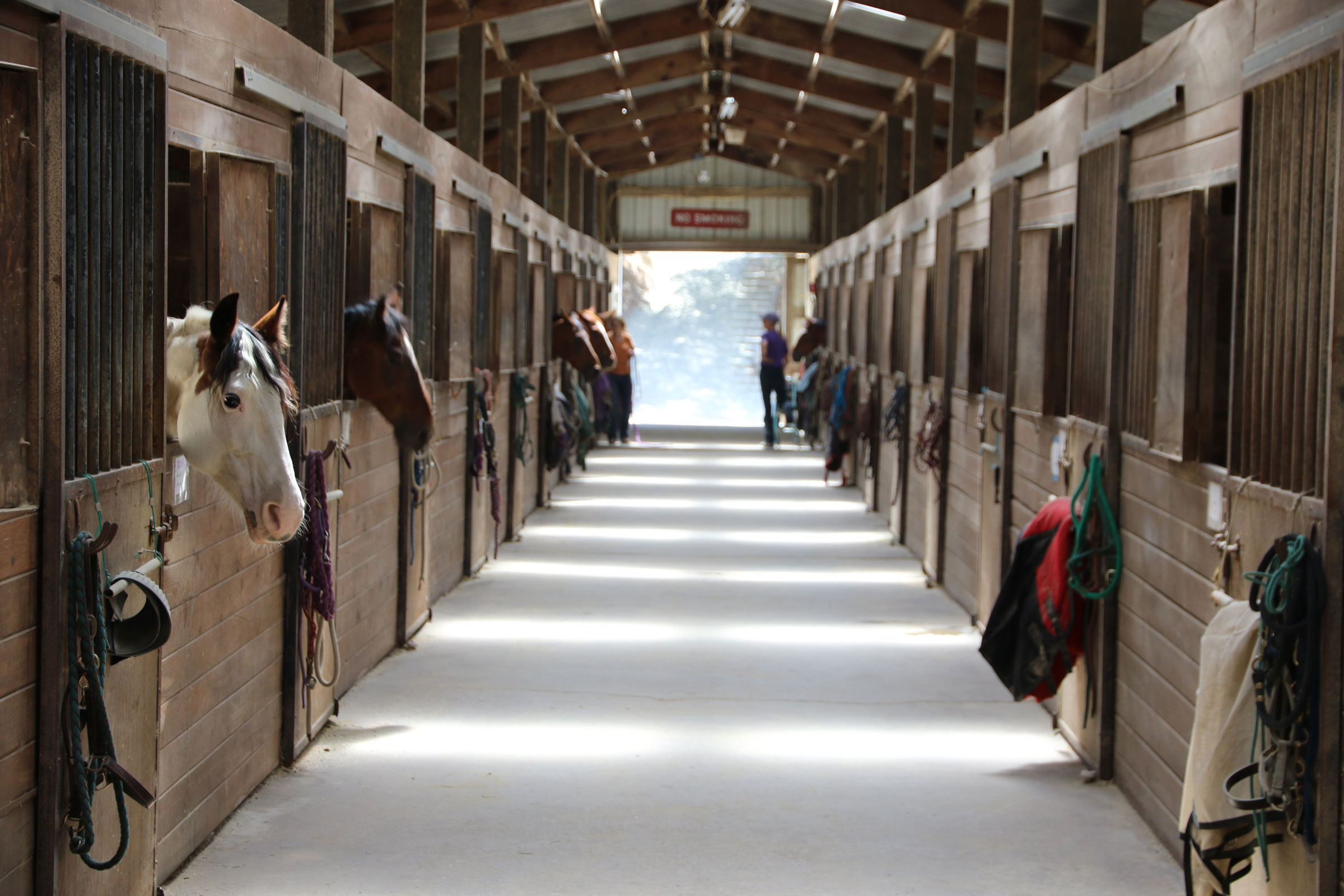
“We know that the stable should smell like fresh forage and clean horses rather than manure or ammonia,” said Eileen Fabian, PhD, a professor of agricultural engineering and environmental biophysics at the University of Pennsylvania. “But, failure to provide adequate ventilation is the most common mistake made in construction and management of modern horse facilities.”
In part, the trend toward residential construction practices in horse housing is contributing to poor ventilation. Despite the fact that horses are our companions and pets, when it comes to stable design, they are considered livestock, and the facility should reflect that.
In basic terms, ventilation is providing fresh air in the barn year-round while allowing stale air to escape. Leaving barn doors open isn’t enough to encourage ventilation in a barn according to Fabian. Instead, she says a barn should have multiple small openings so that every horse has access to fresh air.
“The eaves, the area where a barn sidewall meets a roofline, is an ideal location for openings,” she said. “In this location, the air speed and temperature is tempered by the time it reaches the horse so it isn’t a draft.”
A draft occurs when cold air blows on a horse. Since horses tolerate colder conditions better than humans, what we consider drafty is not necessarily uncomfortable to the horse. “Be sure to differentiate between a cold temperature and a draft,” Fabian said.
A main principle of ventilation is that even very cold fresh air can be introduced into a horse stall, so when mixed and tempered with stable air, it no longer has the air speed and chill of a draft.
“In the winter, we like to shut a barn down tight to use the horse’s body heat to keep them warm,” Fabian said. “During winter, horse stables should be kept no more than 5 to 10°F warmer than the outside temperature.”
Keeping the inside of the barn within 10 degrees of the outdoor temperature provides fresh air conditions, but it also means freezing will occur inside stables in cold-weather climates.
“Barn managers who want or need warm stable conditions for their (or their clients’) comfort during horse care activities should instead of heating the whole barn or cutting off ventilation to trap horse body heat, provide a heated grooming and tacking area,” she said.
Fabian and her colleagues prepared a comprehensive guide to stable design that explains how to encourage ventilation in horse barns. The document can be found at http://extension.psu.edu/animals/equine/horse-facilities/stable-ventilation.


